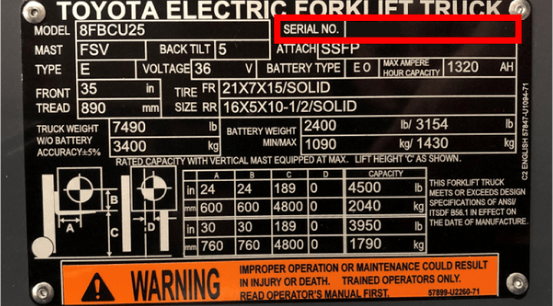Converting Your Fleet from Internal Combustion to Electric Forklifts

Evolving business needs often lead to major changes in organizations and operations. For the management of material handling applications, many companies have undergone a transformation to electric forklift fleets. It’s a trend that has occurred over the last decade for a variety of reasons – including rising environmental standards, the impact on the total cost of ownership, and, in some cases, efficiency advantages that can be provided by electric forklifts under the right conditions.
How to Convert Your Forklift Fleet to Electric?
- Have the facility space, electric power sources, and layout to facilitate electric forklifts.
- Have the capital to pay the higher initial upfront cost for electric models.
- Have a full solutions material handling provider who can facilitate the transition with support, maintenance, and OEM parts available.
- Ensure your workforce is trained to operate electric forklifts.
If you determine an electric conversion is right for you, here are some things to consider as you begin on the path to transition.
What is my current ownership/financing model for forklifts?
How and when you make the transition to electric forklifts may be a matter of financing structure. Some organizations have full ownership over their fleet. If this is the case, you’ll need to make sure your usage either justifies a replacement process or that you can receive enough capital from resale to justify the transition to new/used electric models.
If you leased all trucks in your fleet simultaneously, prepare your conversion for the time those leases expire. Work with your forklift provider to facilitate a transition to new leases – this can be easily facilitated by a provider who works directly with a captive finance company (like Toyota does with Toyota Industrial Commercial Finance).
Other organizations will have a mixture of leased and owned models or leases that expire at different times. If this is the case, you’ll need to consider the more complicated question of whether your facility is equipped to perform a gradual transition, replacing internal combustion forklifts with electric forklifts as it makes sense to do so. Maintaining operation and maintenance, as well as fueling and battery swapping activities, simultaneously can be time-consuming and have an impact on things like facility routing and organization. Make sure you’re equipped to handle it.
What Do I Need to Do to Prepare My Facility for Electric Forklift Conversion?
While you may be used to the speed and relatively low storage needs of swapping propane tanks to power your forklifts, providing energy to your electric models can take more storage space and time. Depending on the battery you select, storage for those batteries can be somewhat cumbersome. They are bigger and heavier than propane tanks and may have to swap as often as every shift depending on your charging method and usage. Speaking of weight, you’ll also need dedicated space for swapping batteries and associates trained to do so. Preparing your facility for this kind of activity is important before you make the transition.
Making a transition to electric also means considering the type of battery you want to select – including traditional lead-acid batteries or lithium-ion batteries. Each can provide unique energy advantages that can be closely evaluated for your specific operation.
Work with a forklift provider who is well-versed in both IC and electric forklifts to help – Toyota authorized dealers can provide an audit of your site to help you prepare.
Is My Workforce Trained to Operate Electric Forklifts?
After you work with a forklift provider to determine which electric models best fit your operation, you may find yourself with new machines that look and operate differently than your previous models. Remember, OSHA requires that operators be trained on every unique type of forklift that they use. Make sure your associates are properly trained in the use of new electric models.
The transition to a fully electric forklift fleet can have long-term benefits for many operations. But careful evaluations of your preparedness to make the change needs to be completed before a final decision is reached. Your Toyota forklift dealer can help to audit your operation and provide you with the appropriate recommendations.


